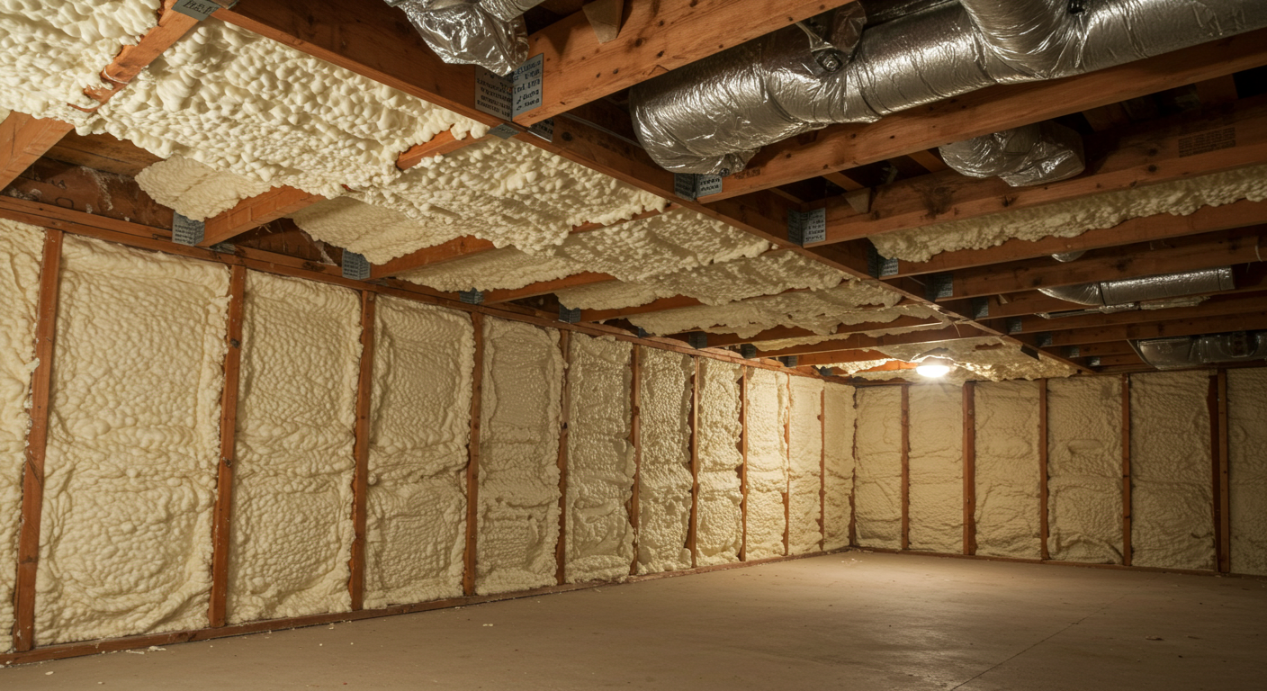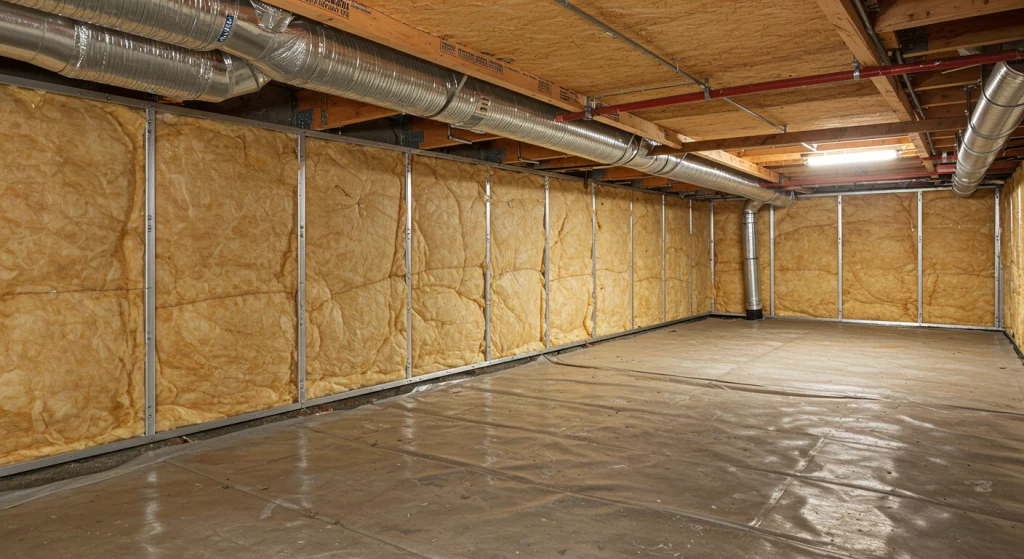
Proper crawl space insulation directly improves home energy efficiency, reduces moisture-related issues, and creates a more stable indoor environment. By limiting heat loss through the floor and sealing off air intrusion from the ground, it decreases HVAC strain and energy costs. In regions with extreme temperatures like Nevada, where seasonal heating and cooling demands are high, inadequate insulation in this area can lead to significant energy loss.
Homes without well-insulated crawl spaces are more prone to condensation, mold, structural decay, and indoor air quality concerns. Proper installation of insulation in this area also helps protect plumbing from freezing and reduces the workload on HVAC systems. This article provides clear, practical guidance on insulation types, performance data, and key decision points.
Nevada Urethane applies insights from years of direct installation experience across residential, commercial, and agricultural projects throughout the Southwest. This content draws from on-the-ground knowledge of material behavior in dry climates with wide temperature fluctuations.
| Insulation Type | Material | R-Value (per inch) | Moisture Resistance | Best Use Case | Installation Difficulty |
|---|---|---|---|---|---|
| Closed-Cell Spray Foam | Polyurethane | 6.0 – 7.0 | High | Unvented or sealed crawl spaces | Moderate |
| Rigid Foam Board | Polystyrene/XPS | 4.5 – 5.0 | Moderate to High | Foundation walls | Low to Moderate |
| Fiberglass Batts | Glass Fibers | 2.9 – 3.8 | Low | Floor joists (vented crawl) | Low |
| Mineral Wool Batts | Rock or Slag Wool | 3.7 – 4.2 | Moderate | Sound & fire resistance needed | Low |
| Factor | Optimal Specification | Notes |
|---|---|---|
| Minimum R-Value (Nevada) | R-13 (walls) / R-19 (floors) | Per DOE climate zone 5 guidelines |
| Vapor Barrier Location | Ground and foundation walls | Reduces moisture ingress |
| Ventilation Status | Unvented preferred | Controlled air reduces humidity & energy loss |
| Thermal Bridging Risk | High without continuous foam | Foam application creates a sealed thermal envelope |
| Pest Intrusion Control | Enhanced with closed-cell foam | Seals gaps and entry points better than batt insulation |
Preventing heat transfer through the floor reduces HVAC runtime. Homeowners in the Southwest report savings of 10%–20% annually with proper insulation (Source: U.S. Department of Energy).
Insulation paired with a vapor barrier prevents moisture accumulation. In Nevada’s arid climate, even limited humidity can build up under poorly insulated homes.
Bonus Tip: Install a dehumidifier if crawl space humidity exceeds 60%, even with insulation and a vapor barrier.
Air exchange between crawl spaces and the living area contributes to indoor air pollutants. Closed-cell insulation minimizes this pathway.
Preventing moisture intrusion preserves wood joists and subfloor materials, limiting rot and insect infestations.

Bonus Tip: Always seal air leaks before installing insulation. Without air sealing, insulation alone cannot block energy loss.
Closed-cell spray foam offers superior air sealing and moisture control.
Only if it’s dry, intact, and not compressed. Otherwise, it should be removed.
Spray foam can last 30+ years with no maintenance. Fiberglass typically needs replacing within 15–20 years.
Yes. DOE data shows average payback periods of 3–6 years for well-executed installations.
Nevada Urethane provides professional solutions for residential crawl space insulation across Nevada. For evaluations, upgrades, or removal services:
Phone: (775) 397-2820 Email: [email protected]
Look for sagging batts, musty odors, high energy bills, and cold floors above the space.
In Nevada, sealed crawl spaces with controlled humidity offer better performance.
This traps moisture. Remove old insulation first unless it’s confirmed dry and intact.
R-19 under floors and R-13 on crawl space walls meets most local and federal guidelines.
Only for rigid boards or batts. Spray foam requires safety gear and trained application.